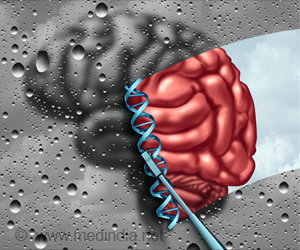Japanese researchers found umbilical cord blood markers linked to autism risk, highlighting the role of PUFA metabolites.
- Elevated levels of the metabolite 11,12-diHETrE in umbilical cord blood are linked to increased autism symptoms and impaired social interactions
- PUFA metabolites, particularly diHETrE, during the fetal period significantly impact postnatal ASD development and adaptive functioning
- Early detection of ASD through cord blood analysis could improve intervention strategies and outcomes for children with autism
Causes of Autism Spectrum Disorder
Although the actual causes of ASD are unknown, recent research indicates neuroinflammation could be a major contributor. Research in mouse models of ASD has suggested that polyunsaturated fatty acids (PUFA) and their metabolites during pregnancy play a critical role in ASD development. PUFA metabolites controlled by cytochrome P450 (CYP) impact fetal development in mice, generating deficits similar to ASD symptoms. However, it is uncertain whether the same holds for humans and requires further inquiry.To address this knowledge gap, a research team from Japan consisting of Professor Hideo Matsuzaki from the Research Center for Child Mental Development, University of Fukui, Dr. Takaharu Hirai at the Department of Psychiatric and Mental Health Nursing, School of Nursing, University of Fukui, and Dr. Naoko Umeda from the Department of Maternal and Child Health Nursing, School of Nursing, University of Fukui, analyzed the CYP-PUFA levels in neonatal umbilical cord blood samples. Their findings, published on July 23, 2024 in Psychiatry and Clinical Neurosciences, offer light on the potential etiology of ASD (1✔ ✔Trusted Source
Fatty acids in umbilical cord blood might cause autism spectrum disorder
Go to source).
Polyunsaturated Fatty Acids Metabolites in Umbilical Cord Blood and Autism Spectrum Disorder
Prof. Matsuzaki describes the purpose of their study, "CYP metabolism produces both epoxy fatty acids (EpFAs), which have anti-inflammatory effects, and dihydroxy fatty acids, or 'diols,' which have inflammatory properties." We expected that CYP-PUFA metabolite dynamics throughout the prenatal period, namely reduced EpFA levels, greater diol levels, and/or increased EpFA metabolic enzymes, would influence ASD symptoms and difficulties with everyday functioning in children after birth."To explore this idea, researchers looked at the relationship between PUFA metabolites in umbilical cord blood and ASD scores in 200 children. The cord blood samples were obtained shortly after delivery and maintained adequately, while ASD symptoms and adaptive functioning were tested when the same children were six years old, with the help of caregivers.
Following rigorous statistical analysis of the results, the researchers found one molecule in cord blood that may have significant consequences for ASD severity: 11,12- dihydroxyeicosatrienoic acids (diHETrE), a dihydroxy fatty acid generated from arachidonic acid.
"The levels of diHETrE, an arachidonic acid-derived diol, in cord blood at birth had a significant impact on subsequent ASD symptoms in children and were also linked to impaired adaptive functioning." These findings show that the dynamics of diHETrE during the fetal period play an essential role in children's postnatal development," says Prof. Matsuzaki.
More particular, the researchers discovered that higher amounts of the chemical 11,12-diHETrE affected social interactions, whereas low levels of 8,9-diHETrE influenced repetitive and restricting behaviors. Furthermore, this correlation was more particular to girls than boys. This fresh knowledge may be critical in understanding, diagnosing, and maybe preventing ASD. Measuring diHETrE levels at birth may allow us to predict the chance of ASD development in children.
At Birth Intervention Could Provide Better Support for Children With Autism
"The effectiveness of early intervention for children with ASD is well established and detecting it at birth could enhance intervention and support for children with ASD," according to Prof. Matsuzaki. He also suggests that blocking diHETrE metabolism during pregnancy could be a viable strategy for reducing ASD features in children, though further research is needed.In conclusion, these findings provide a viable avenue for researchers to uncover the riddles of ASD. We believe that improved understanding and early diagnosis will improve the lives of people with ASD and their families.
Reference:
- Fatty acids in umbilical cord blood might cause autism spectrum disorder (https://www.eurekalert.org/news-releases/1052683)
Source-Medindia
















